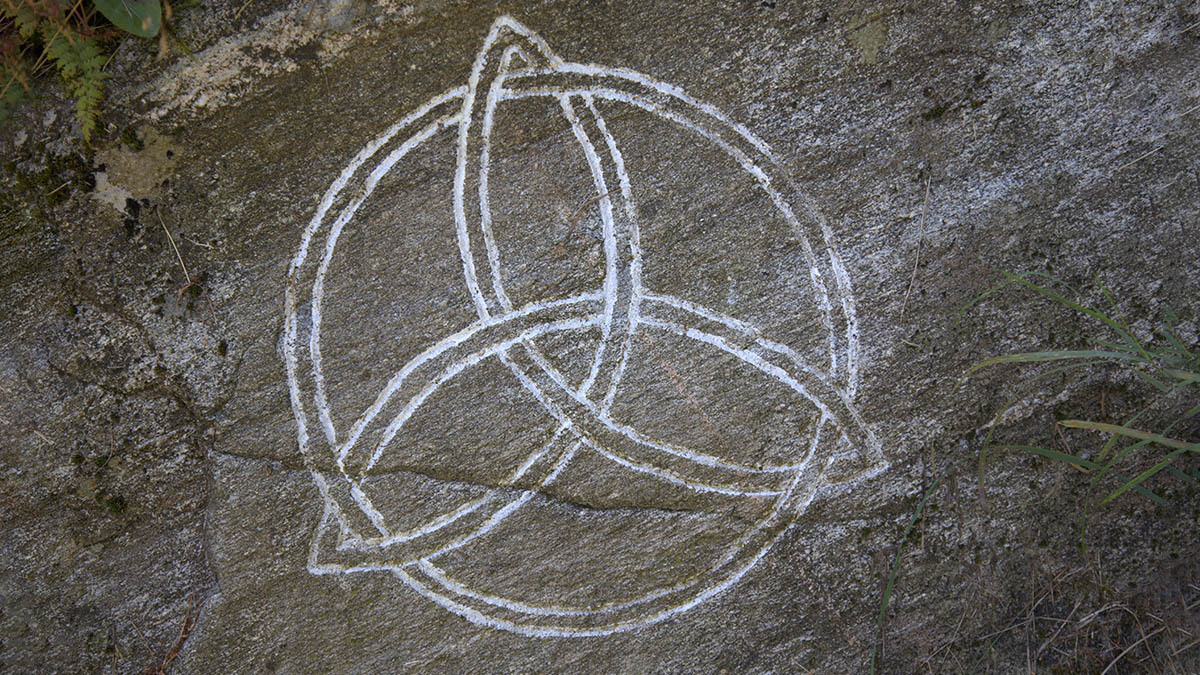
Is The Trinity Practical? - Part 2
Behold Your God!
You’ve probably heard many attempts to explain the ‘oneness’ and ‘three-ness’ of God by analogy. Water is one substance that can exist in three forms; gas, liquid and solid. An egg is one thing made up of three parts: yolk, white and shell. However, all such analogies break down at some point. Water cannot exist in three forms at the same time, nor do the individual parts of an egg possess the full being of the whole; they are only ever parts. None of these do justice or bring resolution to the tension that exists within the doctrine of the Trinity which says that: “God exists as three persons; Father, Son and Holy Spirit, and each person is fully God, and there is one God.”2 (Grudem, p. 226)
Here is a graphic that’s been around for a long time and I think is a good illustration to grasp at least the logic of what the doctrine of the Trinity is affirming. However, every illustration has its shortcomings, and this one is no exception in that the way it looks it temps one to think of the inner circle ‘God’ to represent some kind of quality or characteristic that is shared by each member of the Trinity. But it isn’t that the Father, Son and Holy Spirit share the same characteristics, rather they share the same being. Perhaps it would be better if the circle titled God encompassed the whole picture, but then of course the logic would not be as clear. It’s a good picture, but not perfect.
The simple fact is that there are no examples within our universe to parallel God’s triune nature. This sets God apart (i.e. makes him holy) from everything else, reaffirming the bedrock truth of the Christian worldview which is that the Creator cannot be found within His Creation. He is completely ‘other’ (i.e. transcendent) in his being.
The Trinity Safeguards Worship
The doctrine of the Trinity therefore protects us against idolatry by preventing us from reducing God to something we can define on our own terms. As Paul put it, “[to exchange] the glory of the immortal God for images made to look like mortal man and birds and animals and reptiles” (Romans 1:22). The essence of sin is to replace the Creator with the Creation. “You will be like God...” (Gen. 3:5) was the seduction that Adam and Eve failed to resist. Are we aware of our own tendency to do the same?
I am reminded of a passage from C. S. Lewis’s The Lion the Witch and the Wardrobe where Mr. Beaver tells the children about Aslan the “Great Lion” who is King over all Narnia:
“Ooh”, said Susan. “I’d thought he was a man. Is he quite safe? I shall feel rather nervous about meeting a lion”.......“Safe?” said Mr. Beaver. “Who said anything about safe? Course he isn’t safe. But he’s good. He’s the King, I tell you.”
How prone we are to wish as Susan did; that God would be a ‘safe’ God, fitting neatly into our own categories of thought and making us feel quite at ease with ourselves. But He is not and does not! The truth is that our own best thoughts about God are little more than projections of our loftiest ideas about ourselves. As John Calvin put it, our sinful minds are “a perpetual factory of idols,”3 and so, apart from God revealing himself to us, we will instinctively create him in our own image. The doctrine of the Trinity keeps us from such idolatry by continually allowing the profound yet revealed mystery of His being to shape our minds and worship rather than the other way around.
In our next article in the series, we’ll take a look at how coming to more fully grasp and appreciate the Trinity will deepen and enrich our worship of God.
For some other helpful posts for teaching the Trinity to kids, check out “Teaching the Trinity to Kids” and “The Trinity for Kids”. Also, the book God Is Three Persons is a great teaching tool for young children.
Notes
2. Wayne Grudem, Systematic Theology, (Grand Rapids, MI, Zondervan, 1994), p. 226.3. John Calvin, Institutes of the Christian Religion, 1.11.8.
Header image attribution: remixed image, added content aware fill to sides of image, original taken by Averater, CC BY 3.0 <https://creativecommons.org/licenses/by/3.0>, via Wikimedia Commons (https://commons.wikimedia.org/wiki/File:Georgs_ristningar_treenighet_2.jpg)